Chapter 3: The computer graphics industry evolves
3.4 Other output devices

Other significant display devices and systems were also introduced around the same period. Many people believe that the Adage was the first stand alone computer-aided design workstation. The Adage display had the advantage of extremely high speed (for the time) display rates, allowing for the representation of moving objects and flicker free rotations. The Adage AGT-30, like the IBM 2250 became a mainstay in graphics labs around the world.
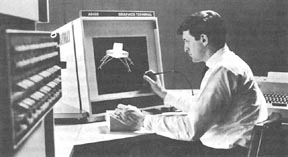
In a 1998 paper in the IEEE Annals of the History of Computing, Don Bissell notes that the IDIIOM CAD workstation, running the IDADS CAD software, actually preceded the Adage workstation, being introduced earlier in 1967 than Adage. Therefore, according to Bissell, “…one must respect IDIIOM’s claim to historical primacy” as the first stand-alone CAD platform.
The ITEK Corporation involved personnel that got their start in the SAGE program at MIT (in particular, Thurber Moffett and Norm Taylor), and in fact was located near the Lincoln Labs facility. The ITEK project was to design optical lenses, and resulted in a system called The Electronic Drafting Machine (EDM). The EDM used a DEC PDP-1 computer from Digital Equipment Corp., a vector-refresh display and a large disk memory device used to refresh the graphic display. Input commands were done with a light pen. The EDM was developed in 1961 and was reported on in Time Magazine, March 2, 1962.
“Technology: … to beat the language barrier between man and machine, ITEK has, in effect hitched the digital computer to the draftsman’s stylus. With a photoelectric light pen, the operator can formulate engineering problem’s graphically (instead of reducing them to equations) …”.
Itek marketed the EDM machine and it was later sold to Control Data Corporation. It was marketed as the CDC Digigraphics System and it was heavily used in the aerospace industry at such companies as Lockheed and Martin Marietta. One of the more pricey systems, the Digigraphics system was available for approximately $500K.
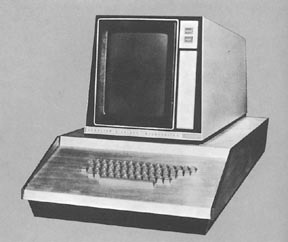
Other display devices included the storage tube display, such as the Computer Displays, Inc. ARDS and the Tektronix 4010 devices. Tektronix invented the direct view storage tube (DVST) vector graphics approach in 1965, and dominated the market for the next 15 years. They actually used their 564 storage tube oscilloscope as a computer graphics display in timeshare systems. Their 601 and 611 models introduced in 1967 were the first in their product line designed specifically for CG display. (They sold for $1050 and $2500, respectively.) The CDI ARDS (Advanced Remote Display System) actually used the Tektronix 611 6×8 storage tube, as did other systems like the Computek Display System. They were priced in the $12K range. The first commercial model from Tektronix was the 4002A, which was priced at about $9K.
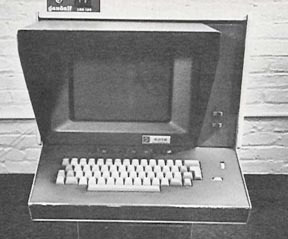
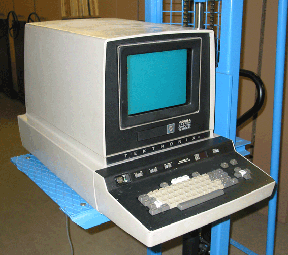
One problem with refresh vector displays is that they must continuously redraw the image on the screen, fast enough that the image doesn’t “flicker“. Storage tube vector graphics terminals differ from refresh vector graphics terminals in that the display maintains a “history” of what is drawn on the screen and therefore doesn’t need to be refreshed. Only when the image changes does it need to be redrawn. For example, one storage tube approach uses two electron guns – one draws lines on the screen, the other bathes the entire display in electrons at a lower intensity. This second beam keeps any phosphor that has been activated continuously illuminated. However, it cannot erase anything except by clearing the entire screen. This last issue (no dynamic capability and the inability to update without erasure of the entire screen) coupled with the low light output made it not as popular for CG people as the refresh tube.
When large quantities of semi-permanent information such as maps had to be combined with dynamic or variable data, a system such as the rear projection CRT display was used. For example, the Bunker Ramo display could project color or black and white film images onto the screen of the CRT with a compensated, off-axis projector. The dynamic data was drawn using the electron gun of the CRT.
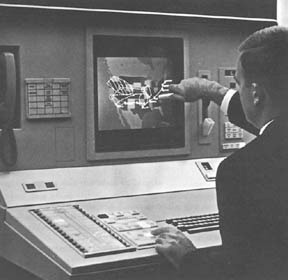
Other output devices included the charactron and the plotter. The charactron used a stencil mask within the CRT to efficiently draw characters on the screen. It was also used in several film recording devices, such as the Stromberg Carlson 4020 from General Dynamics. More discussion of the film recorder will take place in the sections on CGI production facilities. The first plotter developed was the CalComp 565, developed in 1958. The 565 was a high-speed drum-type XY plotter driven by step motors. Each step caused the pen to move horizontally (relative to the paper) a fixed increment (0.1 mm) in either a positive or negative direction at a rate of 250 steps per second. The drum provided the vertical movement. A solenoid permitted the pen to be lifted or lowered onto the paper. CalComp was incorporated in 1958, and introduced the 565 shortly thereafter. In 1986, CalComp became a unit of Lockheed after the company purchased Sanders Associates.
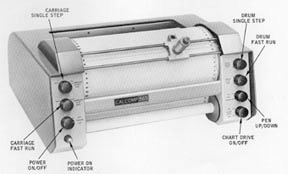
The plasma panel was a technology developed at the University of Illinois in 1964, as part of the PLATO automated teaching system. The technology used arrays of cells filled with neon gas, sandwiched between glass. Capacitors at each cell provided the driving circuitry to address and activate each cell. The plasma panel was patented in 1971 and sold to Owens-Illinois, who developed displays for use with the PLATO system. Later, Japanese and U.S. companies licensed the technology for computer graphics displays, but the technology failed to displace the CRT technology.
See “A Colorful History of an Illinois Technology” at
http://web.archive.org/web/20051001030137/http://www.ece.uiuc.edu/alumni/w02-03/plasma_history.html
Machover, Carl Computer Graphics Terminals – A Backward Look, SJCC 1972.
